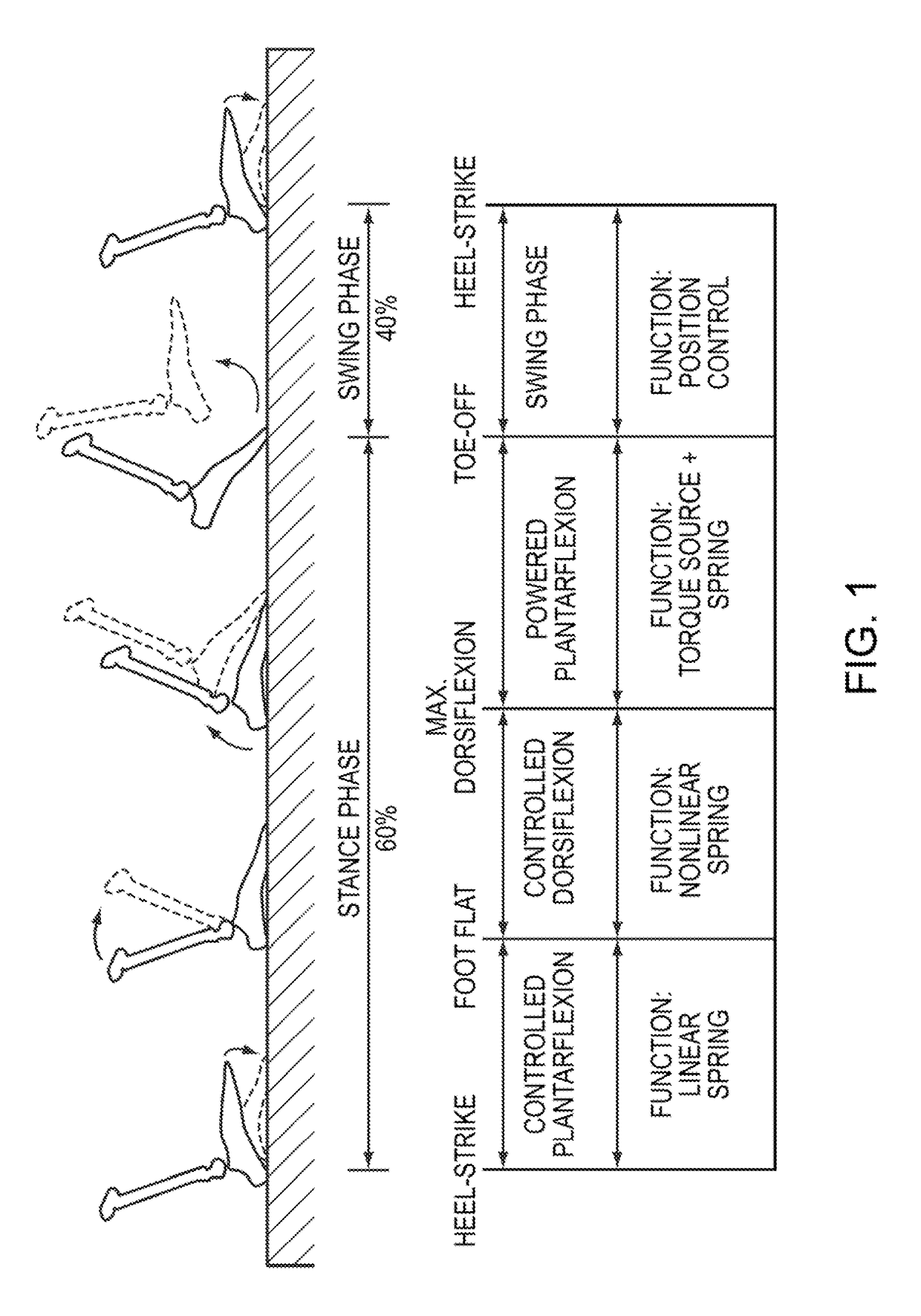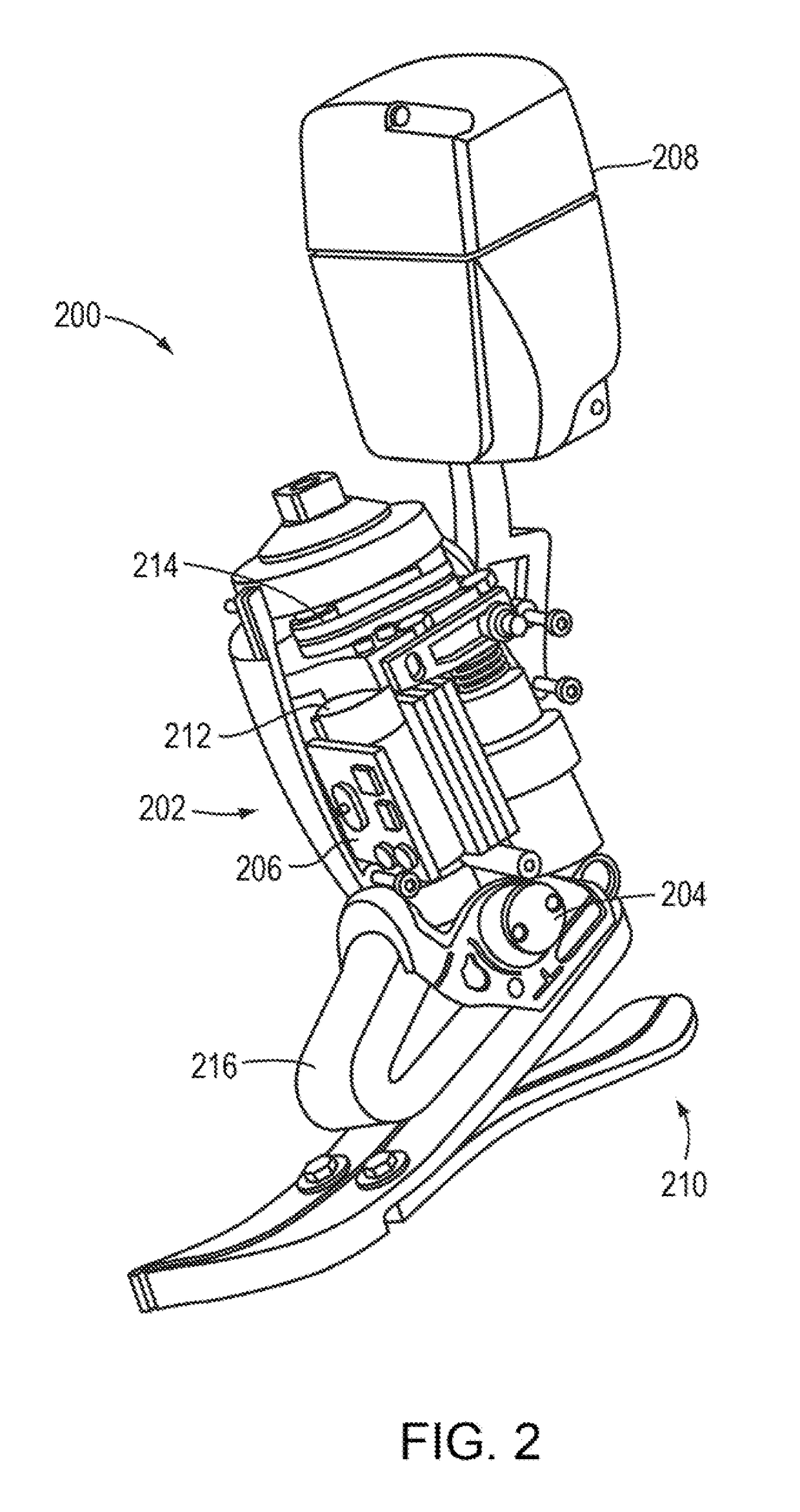Biomimetic transfemoral prosthesis
a biomimetic and prosthesis technology, applied in the field of lower body locomotion, can solve the problems of inability to fully restore function when integrated onto the residual limb, inability to perform net non-conservative work, and limitations in both ankle-foot and knee design, so as to reduce motor work, improve shock tolerance, and increase the power of available joints
- Summary
- Abstract
- Description
- Claims
- Application Information
AI Technical Summary
Benefits of technology
Problems solved by technology
Method used
Image
Examples
Embodiment Construction
[0045]Devices for transfemoral amputees typically include at least a foot-ankle device and a knee device. The foot-ankle and knee devices described herein may be used together or separately, particularly only a foot-ankle device for below-knee amputees. While the embodiments described relate to prostheses, the concepts contained herein may also be useful in other applications, including orthoses and exoskeletons.
[0046]One ankle device 200 capable of restoring ankle function as defined by objective metabolic and biomechanical measures is depicted in FIG. 2. The ankle device 200 is capable of varying ankle impedance during the early to mid-stance periods of walking, emulating the quasi-static stiffness of an intact biological ankle. In addition, the prosthesis 200 provides a sufficiently large instantaneous power output and torque to propel an amputee upward and forward during powered plantar flexion, while still matching the size and weight of an intact ankle-foot complex, e.g., appr...
PUM
 Login to View More
Login to View More Abstract
Description
Claims
Application Information
 Login to View More
Login to View More - R&D
- Intellectual Property
- Life Sciences
- Materials
- Tech Scout
- Unparalleled Data Quality
- Higher Quality Content
- 60% Fewer Hallucinations
Browse by: Latest US Patents, China's latest patents, Technical Efficacy Thesaurus, Application Domain, Technology Topic, Popular Technical Reports.
© 2025 PatSnap. All rights reserved.Legal|Privacy policy|Modern Slavery Act Transparency Statement|Sitemap|About US| Contact US: help@patsnap.com



